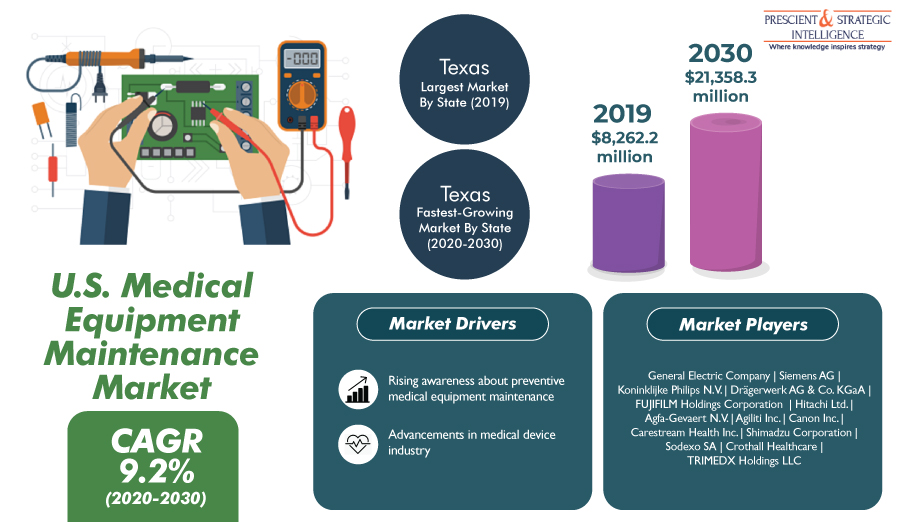At $11,072, the per capita healthcare expenditure of the U.S. was the highest in the world in 2019, as per the Organisation for Economic Co-operation and Development (OECD). The expenditure includes all the spending on constructing healthcare centers, procuring equipment, and hiring staff, as well as offering medical services in the form of diagnosis, treatments, and medicines. Apart from this, a significant portion of the spending is done for the regular maintenance of medical equipment in the country.
Browse detailed report with COVID-19 impact analysis at U.S. Medical Equipment Maintenance Market Research Report
This is necessary as medical devices are used on numerous patients throughout the day and the larger pieces of equipment work almost nonstop. Being however advanced as they are, they are still machines, thus are prone to malfunctioning. As a result of all these factors, the U.S. medical equipment maintenance market revenue, which stood at $8,262.2 million in 2019, will increase to $21,358.3 million by 2030, at a 9.2% CAGR between 2020 and 2030.

And, it is not just the rising awareness of the healthcare fraternity on such issues that is driving medical equipment maintenance activities in the country but also the stringent regulations of the government. The Joint Commission (TJC), Det Norske Veritas (DNV), Healthcare Facilities Accreditation Program (HFAP), United States Food and Drug Administration (USFDA), state departments of health, and Centers for Medicare and Medicaid Services (CMS) mandate compliance with medical equipment maintenance guidelines.
As per P&S Intelligence, the largest contributor to the U.S. medical equipment maintenance market is Texas, on account of the large number of medical centers here and its high healthcare spending. Since over 80% of its healthcare spending is done by the Texas Department of Aging and Disability Services (DADS), Texas Health and Human Services Commission (HHSC), Texas Department of State Health Services (DSHS), Teacher Retirement System (TRS), and Employees Retirement System (ERS), hospitals and other facilities here can easily afford the expensive medical equipment maintenance services.
Hence, with the growing awareness on the preventive maintenance of medical devices and the stringent U.S. government rules in this regard, OEMs and ISOs are expected to win more service contracts in the coming years.

 Log in with Facebook
Log in with Facebook 





